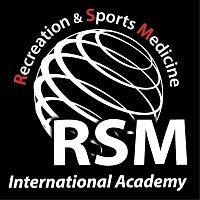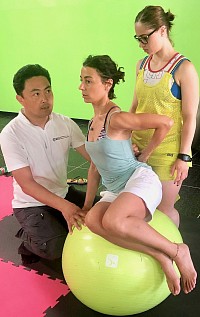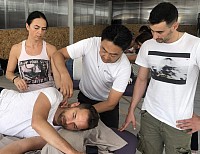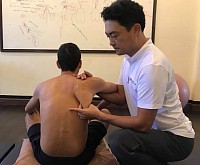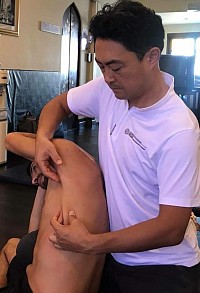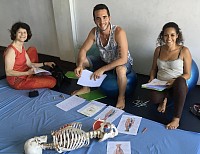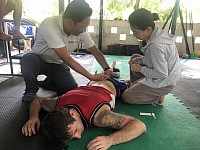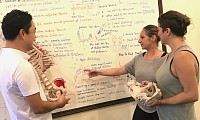Orthopedic Massage Course
Massage Course on Kyphosis, Lordosis, and Scoliosis: Mastering Muscular and Structural Rehabilitation
A person's spinal health can dictate their holistic wellness, given the pivotal role played by the spine in daily movement, posture, and overall comfort. The nuances of kyphosis, lordosis, and scoliosis, though distinct, each demand a detailed therapeutic approach. RSM's orthopedic massage course seamlessly combines deep understanding with practical techniques, all underscored by the standards set by sports medicine research.
Understanding Spinal Deviations and Associated Tensions
Spinal deformities like kyphosis, lordosis, and scoliosis frequently present as more than just structural irregularities; they manifest as intricate musculoskeletal challenges, often leading to uneven muscular tensions, which contribute to discomfort and pain. Kyphosis often causes tightness in the upper back muscles. Lordosis typically results in strained lower back muscles. Scoliosis can create imbalances throughout the back, hips, and shoulders.
Delving Deeply into Kyphosis, Lordosis, and Scoliosis:
Kyphosis
A pronounced outward arch, primarily seen in the thoracic region. This curvature can be attributed to an array of causes, ranging from degenerative diseases to disk issues. The therapeutic lens here is trained on alleviating stress from the posterior muscles, while at the same time fortifying the anterior segment.
Lordosis
Recognized by a pronounced inward curvature, predominantly in the lumbar region, it can arise from various triggers, including obesity, osteoporosis, and muscular imbalances. Our remedial focus aims to restore the equilibrium between the anterior and posterior lumbar musculature.
Scoliosis
A sideward curvature of the spine. It can be functional, often stemming from muscular imbalances; or structural, deeply rooted in joint idiosyncrasies. The RSM approach for scoliosis incorporates stretching, fortification, and massage therapy techniques tailored for this specific deviation.
Distinguishing Functional from Structural Deviations
Our training program will help you equip yourself with the knowledge to discern functional anomalies, often arising from muscle imbalances; and structural ones, intricately tied to unique joint configurations. Recognizing the genesis of the deviations is the cornerstone of effective therapeutic strategies.
Identifying Tension, Adhesion, and Nerve Compression
Our classes also place a strong emphasis on identifying muscle tension and adhesions. Muscular tension, often a response to abnormal spinal curvature, can lead to discomfort and restrict movement. Adhesions, painful and rigid tissue bands, can develop in muscles and tendons, exacerbating pain. Understanding the potential for nerve compression or entrapment, such as in conditions like thoracic outlet syndrome or sciatica, is also essential for effective therapy. These issues can be instigated or aggravated by spinal abnormalities.
Muscle Dynamics and Joint Infrastructure
Venture into the intricate biomechanics that influence orthopedic conditions like kyphosis, lordosis, and scoliosis. Gain insights into the role of joint frameworks in structural deviations to understand the ripple effects they cause in terms of tension, nerve impingement, and resultant discomfort.
Cutting-Edge Therapeutic Modalities
Master a harmonized application of trigger point therapy, deep tissue massage, myofascial release, and strategic stretching. Each modality is meticulously chosen for the specific spinal anomaly at hand.
Practical Execution and Palpation Mastery
Go beyond theoretical knowledge and achieve finesse in palpation methodologies to pinpoint aberrant joint formations, nerve compressions, and muscular tension zones. This pragmatic approach to learning gives therapists the dexterity to address a wide range of client needs.
The Crucial Role of Palpation
In the specialized field of orthopedic massage palpation techniques are fundamental. It is through skilled palpation that therapists can discern the intricate details of muscular tension, adhesions, and potential nerve compressions often associated with spinal conditions like kyphosis, lordosis, and scoliosis.
Palpation Techniques and Motion Analysis
The course delves into advanced palpation techniques. Effective palpation involves comprehending each muscle's structure and function. Feeling the muscle's texture, tone, and response to pressure enables therapists to gather critical information about the underlying problems.
We also analyze movements that commonly amplify pressure on the body. Patients with kyphosis may experience increased pain during forward-bending activities; those with lordosis might find extension movements challenging. In scoliosis, asymmetrical movements or postures can exacerbate discomfort. Understanding these movement patterns is key to devising effective treatment strategies.
Safety-Centric Yet Impactful Protocols
With paramount emphasis placed on client safety, the effectiveness of our protocols ensure that structural or functional deviations are therapeutically addressed, paving the way for pain mitigation and recuperation.
Client Communication and Pain Relief Strategies
An integral part of our course involves effective communication with clients during palpation. This interaction aids in identifying precise discomfort areas and comprehending the client's pain tolerance. Such communication is not only therapeutic but also instrumental in customizing the massage to target painful areas for significant relief.
Improving Quality of Life
The primary goal of orthopedic massage for kyphosis, lordosis, and scoliosis is to improve the client's quality of life. By decreasing pain and enhancing mobility, clients can experience a notable reduction in discomfort and an improvement in their daily activities. This course equips therapists with the skills to make a meaningful difference in the lives of those suffering from these spinal conditions.
The importance of palpation in orthopedic massage for spinal deviations cannot be overstated. It is a technique that goes beyond mere skill, demanding a profound understanding of anatomy, a sensitive touch, and empathetic client communication. This course aims not only to impart technical knowledge but also to transform how therapists approach spinal deformities, leading to more effective treatment and improved patient wellbeing. Mastering palpation opens the door to more accurate, personalized, and effective pain relief strategies for individuals afflicted with these complex spinal conditions.
Schedule and Course Fee
THB 6,900 Baht
(approx. EUR 175/ USD 190)
- 2-Day Intensive Course, Saturday & Sunday
- Training 10:00-12:00 / 13:00-15:00
- ( Total Duration: 8 hours )
Course Overview
Analyzing Spinal Anomalies & Biomechanics
Learn the biomechanical principles governing kyphosis, lordosis, and scoliosis. Examine the broader repercussions these conditions have on movement, posture, and overall well-being.
Massage Therapy Regimens for Spinal Revitalization
RSM’s blueprint offers orthopedic massage regimens rooted in sports medicine, addressing the unique challenges posed by each spinal deviation. The goal? Enhanced posture and palpable relief.
Evaluation & Intervention Techniques
Arm yourself with evaluative tools to ascertain the degree of spinal deviations and allied pain zones. Learn to mold your therapeutic strategies accordingly, ensuring clients clearly discern and enjoy the benefits.
Preservation of Enhanced Posture & Spinal Vigor
Reinforce the importance of long term postural maintenance. Leave clients with the necessary insights and exercises to sustain their rejuvenated spinal health.
Course Consolidation & Certification
A comprehensive recap will cover the key teachings and methodologies. Upon successful evaluation, class participants will be awarded a certification in orthopedic massage as testament to their expertise in rehabilitating spinal deviations via massage, supported by sports medicine principles.
